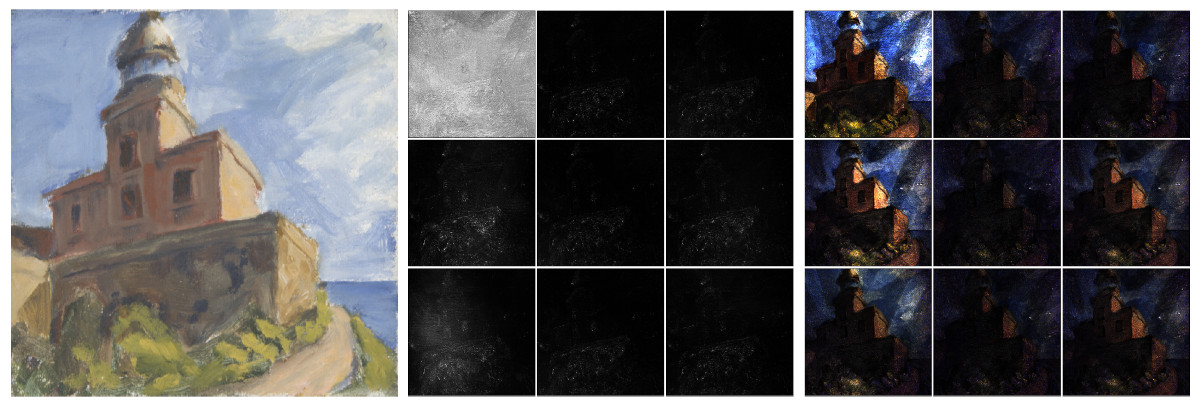A Practical and Efficient Model for Intensity Calibration of Multi-Light Image Collections
Ruggero Pintus, Alberto Jaspe-Villanueva, Antonio Zorcolo, Markus Hadwiger and Enrico Gobbetti

The Visual Computer (Selected paper from CGI 2021), Vol.37, No.9, pp. 2755-2767 , 2021
We present a novel practical and efficient mathematical formulation for light intensity calibration of Multi Light Image Collections (MLICs). Inspired by existing and orthogonal calibration methods, we design a hybrid solution that leverages their strengths while overcoming most of their weaknesses. We combine the rationale of approaches based on fixed analytical models with the interpolation scheme of image domain methods. This allows us to minimize the final residual error in light intensity estimation, without imposing an overly constraining illuminant type. Unlike previous approaches, the proposed calibration strategy proved to be simpler, more efficient and versatile, and extremely adaptable in different setup scenarios. We conduct an extensive analysis and validation of our new light model compared to several state-of-the-art techniques, and we show how the proposed solution provides a more reliable outcomes in terms of accuracy and precision, and a more stable calibration across different light positions/orientations, and with a more general light form factor.
@Article{ Pintus:2021:PEM,
author = {Ruggero Pintus and Alberto {Jaspe Villanueva} and Antonio Zorcolo and Markus Hadwiger and Enrico Gobbetti},
title = {A Practical and Efficient Model for Intensity Calibration of Multi-Light Image Collections},
journal = {The Visual Computer},
year = {2021},
volume = {37},
number = {9},
pages = {2755--2767},
abstract = { We present a novel practical and efficient mathematical formulation for light intensity calibration of Multi Light Image Collections (MLICs). Inspired by existing and orthogonal calibration methods, we design a hybrid solution that leverages their strengths while overcoming most of their weaknesses. We combine the rationale of approaches based on fixed analytical models with the interpolation scheme of image domain methods. This allows us to minimize the final residual error in light intensity estimation, without imposing an overly constraining illuminant type. Unlike previous approaches, the proposed calibration strategy proved to be simpler, more efficient and versatile, and extremely adaptable in different setup scenarios. We conduct an extensive analysis and validation of our new light model compared to several state-of-the-art techniques, and we show how the proposed solution provides a more reliable outcomes in terms of accuracy and precision, and a more stable calibration across different light positions/orientations, and with a more general light form factor. },
doi = {10.1007/s00371-021-02172-9},
}